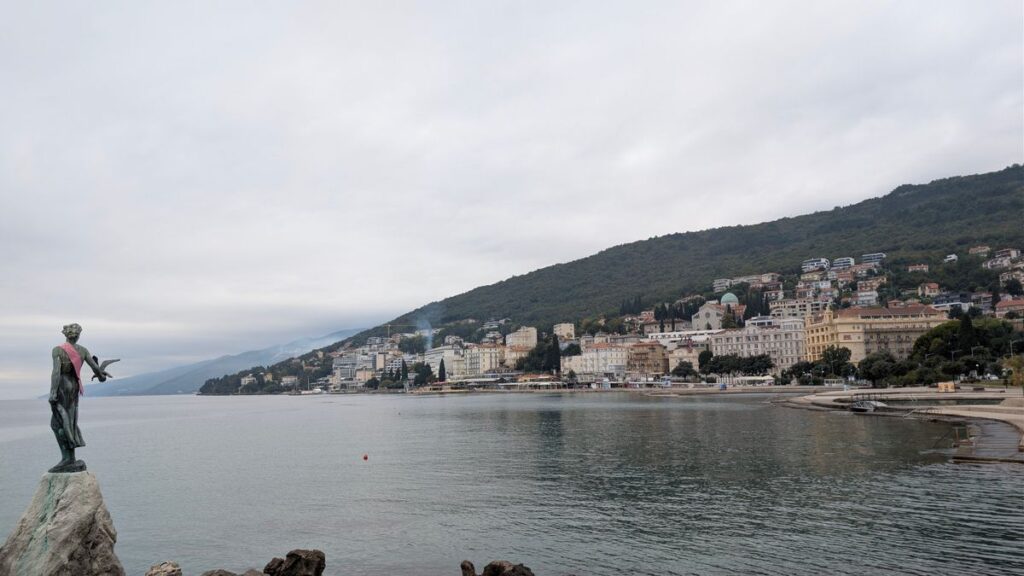
Some luxury properties literally hover above hoi polloi, on mountains in Switzerland, on the top floors of 100-storey towers. But they hover above the places and cultures of their locales at their peril.
According to the advisors I spoke with at the recent Travel Leaders International Luxury Forum in Opatija, Croatia, today’s increasingly seasoned, increasingly sophisticated luxury traveller wants their five stars served with a side of local specificity.
But often, the corporations and families with the will and means to open new five-star hotels in Opatija, as elsewhere, are choosing new builds, like the Keight and the Navis, choosing their perception of international standards of luxury – think glass and steel rather than wood and plaster – rather than building on their own heritage.
The Navis, a new hotel just outside Opatija, draws on the personal history of the Kapetanović family that built it and who runs it. It’s a lovely hotel, and Kristjan Staničić, the director of the national tourist board, let slip over dinner there that he thought it was the most beautiful hotel in Croatia. And if the Navis were part of a more varied and rooted hotel ecology, it might act as a nice alternative, a Hazelton Hotel to the Four Seasons, a l’Hotel to le Reine Elizabeth.
They’ve done fine jobs, both the originally central Bosnian Kapetanovićes and Katica Hauptfeld, who owns the Keight through her company Katarina Line, and the fact that both these new hotels are family-owned and -run is lovely. But either of these hotels could be airlifted into Capri, Vancouver, Rotorua, or Lima and fit in just as well.
Those of us who travel a lot and consistently – including luxury travellers – are perhaps more aware than most of the similarities that grow out of the tourism industry’s best-practices. It can be nice to find Gucci and Hermes shops wherever you go, but part of the real value and enduring pleasure of travel is discovering Piquadro and Delvaux.
The less locally specific a place is, the less likely you are to tell your friends about it, and the less likely it is that you’ll be able to maintain a sustainable tourism industry. And luxury qua luxury, is not distinct, it’s just nice.
Georges V and the Ritz are distinctly French, the Dorchester and the Connaught distinctly English, just as the Royal Mansour and La Mamounia are distinctly Moroccan, the Ring Road palace hotels Viennese, and our railway palaces Canadian. Dropping any of these into another culture is like plopping Main Street USA in the middle of Anaheim (or Urayasu, or Marne-la-Vallée).
Big-spending travellers, whether they’re HNW or splurgers, do not need or want the same luxe soaps and lotions in the same marble bathrooms everywhere they go, the don’t need tasteful international furnishings, they don’t need what amounts to a luxury theme park.
On my way back from the Travel Leaders forum, I stopped by the Dolli Hotel in Athens, which several Travel Leader advisors recommended I check out.
The Dolli gets it.
The building is a century-old residence-turned business-turned hotel, bought by the scion of a Cretan hospitality family, who named it for a friend, founder of the nearby Museum of Cycladic Arts, and has furnished it with a gentle mixture of her own tastes and the story of Athens as she sees it, including 5th-century BC amphorae on the lobby mantlepiece, flanking Greek-inspired ceramic work by Picasso and Cocteau, depictions in various media of local gods and heroes, and references to 20th.- and 21st-century Athens to boot. Ury, steeped in the history, the nation, the city, the neighbourhood as well as the family who created it.
This is high luxury deeply steeped in place.
When luxury travellers get back home, they want to know they’ve been somewhere. The highest producing luxury travel advisors know it. Parts of the five-star hotel industry need to catch up.
For the latest travel news, updates and deals, subscribe to the daily TravelPulse newsletter.

